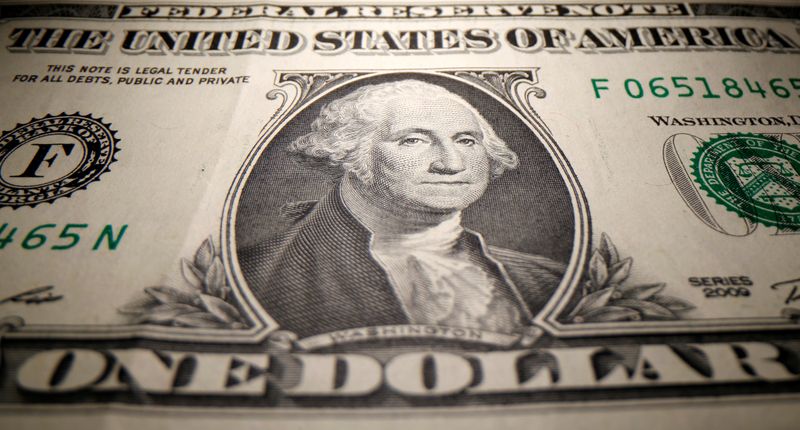By Ankur Banerjee
SINGAPORE (Reuters) – The dollar was subdued on Tuesday ahead of testimony by Federal Reserve chair Jerome Powell, which investors will focus on for cues of the path the U.S. central bank is likely to take in tackling sticky inflation.
The dollar index, which measures the U.S. currency against six major rivals, was 0.067% higher at 104.31, having skidded 0.26% overnight. The index is down 0.6% for the month following a 2.6% gain in February.
The Australian dollar rose 0.01% against the U.S. dollar at $0.673 ahead of the Reserve Bank of Australia’s policy decision later in the day where a quarter-percentage point rate hike is widely expected.
The euro was 0.03% lower at $1.0675, having risen nearly 0.5% overnight. Sterling was last trading at $1.2025, up 0.03% on the day, while the kiwi fell 0.08% to $0.619.
The Japanese yen weakened 0.15% to 136.14 per dollar ahead of the final policy meeting for Bank of Japan Governor Haruhiko Kuroda on Thursday and Friday.
Powell’s testimony before Congress on Tuesday and Wednesday will largely dictate currency market moves this week, with the February jobs report due on Friday also keenly awaited.
Kevin Cummins (NYSE:CMI), chief economist at NatWest Markets, said Powell would likely express heightened concern around inflation but would probably stop short of raising expectations for a 50 basis point hike on March 22.
After delivering jumbo hikes last year, the Fed raised interest rates by 25 basis points at its past two meetings, but resilient economic data throughout February stoked fears of the central bank going back to large hikes.
“We suspect he (Powell) will sound noncommittal for now and take his cues from the looming upcoming key data,” said Cummins, who expects the Fed to raise interest rates by 50 basis points.
Fed funds futures traders are pricing in a 76% probability the Fed will raise rates by 25 basis points at its March meeting. They also expect interest rates to peak at 5.48% in September and still be above 5% at the end of the year.
“What has become clear to financial markets is that inflation is proving far stickier than most had felt at the start of the year,” ING economists said.
“A return to the disinflation and weaker dollar narrative will have to wait.”



